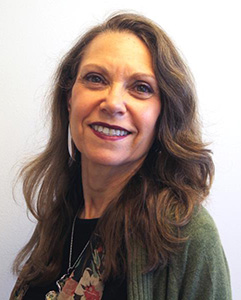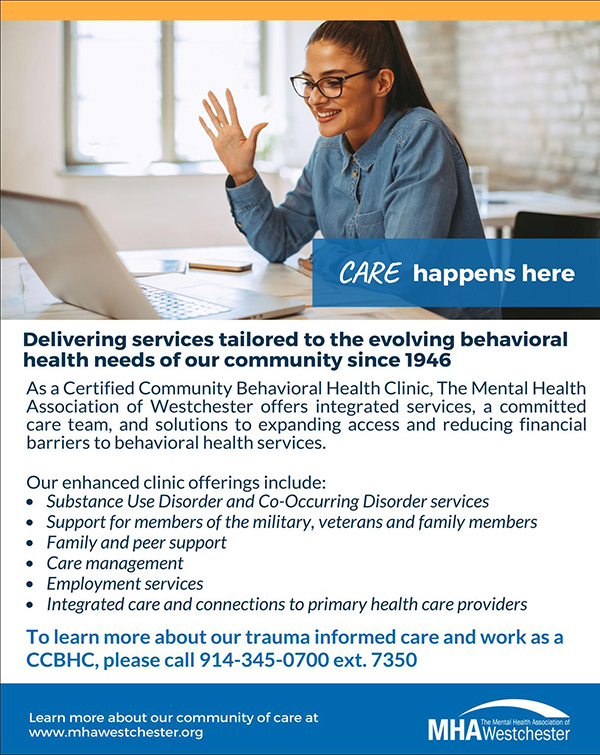Throughout the past year, I have been struck by the degree to which attention to mental health and wellness, specifically of the impact of trauma on mental health, has entered mainstream discussion. “Frontline Workers” (FLW) who continued to show up for work despite personal risks have been heralded across the media. The concept of who constitutes a “Frontline Worker” expanded as we recognized our collective dependence on the individuals who keep shelves stocked, streets cleaned, children educated, transportation running, etc. Simultaneously, attention to the impact of trauma on communities at large as well as on “Frontline Workers” has entered the dialogue. Those who work in the behavioral health and increasingly in other sectors have been steeped in principles of trauma-informed service delivery and staff support for quite some time. However, sensitivity to these issues has not been embedded in the workplace universally, nor do the practices of individual organizations create policy.

To highlight the needs of FLW and address the policy gap, in February 2021, NYS enacted legislation that directs the Commissioner of Mental Health to “convene a workgroup and report regarding frontline worker trauma-informed care.” The legislation, Chapter 33 of the Laws of New York 2021, outlines the following charge:
- Identify evidence-based tools to track the impact of COVID-19-associated collective trauma and the needs of frontline workers;
- Identify or develop training opportunities on how to support the mental health and wellness of their impacted employees for organizations that employ frontline workers;
- Identify evidenced-based trauma-informed support resources and learning opportunities for frontline workers;
- Identify or develop a mechanism to inform and refer impacted frontline workers experiencing symptoms associated with COVID-19 to behavioral health services and supports;
- Consult with any organization, government entity, agency, or person that the workgroup determines may be able to provide information and expertise on the development and implementation of trauma-informed care for frontline workers.

Barbara Bernstein, PhD, MPH
To meet these objectives, a Frontline Workers workgroup, (FLW) was convened by The NYS Office of Mental Health (OMH) in partnership with the Mental Health Association in NYS (MHANYS) and the NYS Trauma-Informed Network. The workgroup is co-led by Donna Bradbury, Associate Commissioner, OMH, and Glenn Liebman, CEO, MHANYS, and facilitated by Amy Scheel-Jones, Senior Consultant, Coordinated Care Services, Inc. It is comprised of more than 30 members who bring viewpoints from health, education, human services and beyond. I am honored to serve on this workgroup. The task is wide-ranging and the time-frame relatively short. Satisfying our first requirement, in March 2021 we submitted an Interim Report which is available on the OMH website. The report includes key concepts in the areas of trauma, disaster recovery, disparity and related topics.
I would like to share some reflections on the work, as well as other impressions of the past year-plus. I will not address the workgroup’s charges in their entirety, nor do I speak for the group or its leaders. First, it has been personally energizing to meet many smart, passionate, dedicated people working hard to mitigate the impact of the pandemic. Their work is accomplished through multiple avenues including direct services, advocacy (including advocacy that resulted in this legislation), attention to staff needs, and government actions. I believe that the critical thinking and degree of attention paid to these issues often does not reach public awareness. Next, policy is critically important. Policy is a statement of values. Policy helps us plan for the future. We expect that government policy will drive allocation of resources and stimulate new initiatives. But I am also aware that policy making is not a rapid process. Policy should be informed, thoughtful, and forward thinking. The work of this group will advance the understanding of the impact on FLW, define the need for ongoing services based on NY-specific data, and inform policy.
As we do this work, I find my thoughts “zooming in and zooming out” – focusing on needs at the individual level, at the organizational level, community level, and rippling out toward larger systems. One of the significant challenges of this work is to connect those levels – to improve the flow of information across and between levels and to use our resources efficiently. There are many good resources and tools available throughout NYS yet all too often information exists in pockets that are unknown to typical individuals and business owners. Connecting resources within and across levels is a challenge in many of the projects in which I am engaged – projects that focus on both prevention and mitigation of the impact of challenging life events from a public health perspective.
One of our workgroup objectives is to “identify or develop” training opportunities for organizations that employ FLW. We will inform ourselves about what already exists, for whom it exists and how those ‘opportunities’ are implemented. To identify gaps, we need to understand the need – i.e. what is the data about the impact of the pandemic on FLW. Only then can we develop training opportunities to address those gaps. And creating a database or clearinghouse of training opportunities will be meaningful if we also address mechanisms to connect impacted organizations with those opportunities. The knowledge of our group is critical in this endeavor. Collectively, we know of many resources across the state, and our knowledge will be augmented by research. There are existing initiatives that connect organizations and individuals to resources, upon which we can build. For example, The NYS Trauma Informed Network works to bring people and resources across NYS together, to disseminate information and to identify resources across the state. Another resource that connects individuals to resources in our most impacted communities is Project Hope. Our workgroup recently benefitted from a presentation by Project HOPE and virtually “toured” its website, which is rich in information. However, we should not underestimate the complexity of developing accessible pathways to supports and services given the vast size and diversity of the groups about whom we are concerned.
Despite the good work of the NYS Trauma Informed Network, Project HOPE (including MHA’s Rockland team), support lines and other endeavors, in my experience those resources are not immediately known by the general community. Too often, individuals are challenged to find resources and, specifically to identify assistance that is a good fit for their situation. How can we best communicate what is available? During this past May, Mental Health Month, numerous community education events were held throughout Westchester. Attendance was disappointing at several events that organizers were confident would meet community need. Is the problem not with the content, but with the way we offer information? Are people fatigued by conversations about COVID and its mental health impact? Rather than inviting people to “attend” scheduled events, even virtually, is it more effective to provide information in venues in which people naturally congregate? Have we done a good-enough job of distinguishing between universally relevant messages about mental health, the impact of challenging situations, and likelihood of resilience, and individual experiences that are best served by more “clinical” interventions? Utilizing a prevention model that matches interventions to universal, selective and indicated levels of need is a useful paradigm. Universal prevention addresses an entire population, all of whose members are likely at the same general risk of the outcome to be prevented or mitigated. Universal prevention programs are generally delivered to large groups without assessment of individual needs. Selective prevention strategies are directed toward sub-groups of the population that share some characteristic – e.g., demographic, socioeconomic, historical factors; again without assessment of individual needs. In contrast, indicated prevention strategies are directed toward individuals who show emerging signs of the undesired outcome. Specialized programs are employed toward that end. For our purposes, universal education is appropriate for our communities as a whole – e.g., Public Service announcements, community education events etc. Selective prevention strategies can be directed to the group of Frontline Workers – even though this is a highly diverse group with respect to service sector, geography, socioeconomic, race, ethnicity and multiple other factors. Selective prevention strategies which are most specific should be available to individuals who experience challenges related to COVID and its related disruptions. This paradigm is useful to satisfy our workgroup charge to identify evidence-based resources for FLW workers. I expect we will discover that there are many practices based on proven principles of trauma informed care and promoting resilience but that few non-”clinical” supports and resources have been evaluated for effectiveness. With respect to promoting resilience, I hope that you will also read the article about priming for post-pandemic growth submitted by Jenna Velez, Mental Health Association of Westchester VP of External Affairs also in this edition of Behavioral Health News.
Another complex challenge, I believe, is how to promote interest and acceptance of conversations about the impact of trauma in organizational and community settings in which currently this is not culturally syntonic? This is a big topic, beyond the scope of this article.
The challenges and tasks I’ve identified are indeed substantive. I believe that the work starts with a group of committed “champions.” Fortunately, NYS has them in this group’s leadership and members and among our state legislators.
Barbara Bernstein, PhD, MPH, is Chief Planning Officer at The Mental Health Association of Westchester.






